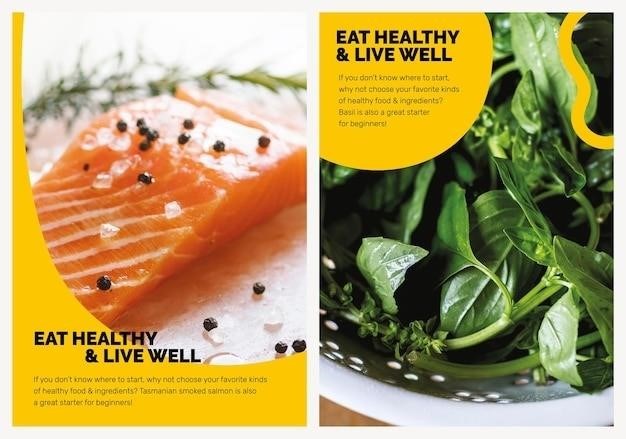100 Foods Before 1⁚ A Comprehensive Guide
Introducing solids to your baby can be exciting and slightly daunting. This guide offers a comprehensive list of 100 foods suitable for babies before their first birthday. A free printable PDF helps track your baby’s food journey, promoting healthy eating habits and minimizing picky eating. Downloadable resources offer support and guidance.
Introducing Solids⁚ A Parent’s Guide
Embarking on your baby’s solid food journey is a significant milestone, filled with excitement and perhaps a touch of apprehension. This comprehensive guide offers invaluable support and resources to navigate this transition smoothly. We understand that introducing solids can be overwhelming, so we’ve compiled practical advice and a wealth of information to alleviate stress and ensure a positive experience for both you and your little one. Our downloadable resources, including a free printable food tracker, aim to simplify the process and provide a structured approach to exploring a wide variety of flavors and textures. Remember, the goal is to foster a healthy and happy relationship with food from the very beginning. Early introduction to a diverse range of foods, including potential allergens, plays a crucial role in preventing future picky eating habits. This guide emphasizes the importance of a balanced diet tailored to your baby’s developmental stage and individual needs. Consult your pediatrician for personalized guidance and address any concerns promptly. We’re committed to providing parents with the knowledge and tools they need to confidently and joyfully introduce solids to their babies. Our resources aim to streamline the process, making it enjoyable and stress-free. We encourage you to explore our free printable PDF, a valuable tool for documenting your baby’s food journey.
Free Printable Food Tracker for Babies
Introducing our complimentary printable food tracker designed to simplify and enhance your baby’s journey into the world of solids! This invaluable resource allows you to meticulously document each new food introduced, noting your baby’s reactions and preferences. Say goodbye to guesswork and hello to organized food exploration! The tracker provides a clear and concise format to record vital information, including the date, food item, quantity consumed, and any observed reactions – a crucial aspect of monitoring potential allergies or intolerances. This comprehensive record-keeping system promotes a healthy and informed approach to introducing diverse foods, ensuring a smooth transition to solids. The user-friendly design makes it easy to monitor your baby’s progress and identify potential patterns. With our free printable food tracker, you can confidently navigate this exciting phase, fostering a positive relationship with food from the start; Downloadable instantly, it’s your go-to companion for charting your baby’s culinary adventures. This detailed record provides invaluable data for your pediatrician, facilitating informed discussions about your baby’s nutritional development and well-being. It also serves as a delightful keepsake, capturing precious moments of your baby’s first food experiences. This practical tool helps parents stay organized and maintain a comprehensive overview of their baby’s dietary progress. Download your free tracker today and embark on this exciting journey with confidence!
Baby-Led Weaning⁚ A Practical Approach

Embrace the empowering philosophy of baby-led weaning (BLW), where your little one takes the reins of their culinary exploration! This approach allows your baby to self-feed soft, appropriately sized pieces of food from the start, fostering independence and a positive relationship with food. Forget purees; BLW emphasizes offering a variety of textures and flavors, mirroring the family’s meals whenever possible. This method nurtures self-regulation of food intake, allowing your baby to listen to their internal cues of hunger and fullness. While ensuring food safety is paramount—avoiding choking hazards through appropriate food selection and preparation—BLW encourages exploration and discovery. It promotes healthy eating habits, reduces the risk of picky eating, and helps develop crucial fine motor skills. This approach requires patience and a willingness to embrace the occasional mess, but the benefits are well worth it. Our comprehensive guide provides practical advice, including a list of suitable foods and safety tips, making this exciting journey manageable and enjoyable for both you and your baby. Remember to always supervise your baby closely during mealtimes and consult with your pediatrician for personalized guidance. BLW is more than just a feeding method; it’s a journey of discovery and empowerment, fostering a lifelong appreciation for a diverse and healthy diet.

Dietary Considerations
Navigating dietary needs for your baby can be complex. This section addresses common concerns, offering guidance on allergen introduction, managing potential sensitivities, and creating a balanced and nutritious diet for healthy growth and development. A balanced approach is key.
High-Fiber Foods for a Low-Carb Diet
While this guide focuses on baby food, the principle of high-fiber, low-carb eating extends to adults. Understanding high-fiber, low-carb options is crucial for managing various health conditions. Many adults follow low-carb diets for weight management or to address specific health concerns. A well-planned low-carb diet can be beneficial, but it’s vital to ensure sufficient fiber intake to maintain digestive regularity and overall well-being. Fiber is essential for healthy digestion, preventing constipation, and promoting gut health. Insufficient fiber can lead to digestive issues and other health problems. Therefore, selecting high-fiber foods within a low-carb framework is critical. This is particularly important because many low-carb foods are naturally low in fiber. Prioritizing fiber-rich, low-carb options helps to mitigate this potential imbalance. Examples of excellent choices include various non-starchy vegetables like leafy greens, broccoli, cauliflower, and asparagus. These vegetables are naturally low in carbohydrates while providing substantial amounts of fiber. Berries, while containing some carbohydrates, also offer a good balance of fiber and nutrients. Nuts and seeds also contribute significantly to fiber intake, although portion control is important due to their calorie density. Choosing foods wisely within a low-carb framework helps maintain a balanced nutritional profile, ensuring both weight management and digestive health. Remember to consult a healthcare professional or registered dietitian before making significant dietary changes, especially if you have underlying health conditions.
100 Carb-Free Foods⁚ A Printable PDF
While the “100 Foods Before 1” guide focuses on infant nutrition, a complementary resource focusing on carb-free foods for adults is highly relevant. Many adults benefit from understanding carb-free options for various dietary needs, including weight management or specific health conditions. This printable PDF provides a comprehensive list of over 100 carb-free foods, categorized for easy navigation. The resource is designed to be a practical tool for those following a ketogenic or very low-carbohydrate diet. The downloadable format allows for easy access and reference, making it convenient for meal planning and grocery shopping. The list includes a wide variety of foods, ensuring a diverse and satisfying diet. It’s crucial to remember that “carb-free” often means very low-carb, with minimal carbohydrate content per serving. This is important for maintaining ketosis, a metabolic state often sought after in low-carb diets. The PDF is carefully curated to minimize the risk of inadvertently including foods with hidden carbohydrates. It emphasizes whole, unprocessed foods, promoting optimal nutrition while adhering to low-carb principles. This resource is a valuable tool for those committed to a carb-restricted lifestyle. However, it’s recommended to consult a healthcare professional or registered dietitian before making significant dietary changes, particularly if you have underlying health conditions or specific nutritional needs. The PDF is designed to be a helpful tool, not a replacement for professional advice.
Allergen Introduction⁚ A Safe and Effective Strategy
Introducing potential allergens early and often is a key strategy in preventing food allergies in infants. While the “100 Foods Before 1” guide provides a broad range of foods, careful consideration of allergens is crucial. This section focuses on the safe and effective introduction of common allergens such as peanuts, tree nuts, milk, eggs, soy, wheat, fish, and shellfish. The information provided is not a substitute for professional medical advice; always consult your pediatrician or a registered dietitian before introducing allergens, especially if there’s a family history of allergies. A gradual approach is recommended, introducing one allergen at a time and monitoring your baby for any allergic reactions. Start with small quantities and observe for symptoms like rash, swelling, vomiting, or difficulty breathing. Keep a detailed food diary to track introduced allergens and any reactions. The timing of allergen introduction can vary, but many experts suggest starting around six months of age, along with the introduction of other solid foods. Remember, early and consistent exposure to potential allergens can significantly reduce the risk of developing food allergies. This approach empowers parents to make informed decisions about their baby’s diet, promoting healthy eating habits and minimizing the risk of allergic reactions. The “100 Foods Before 1” guide serves as a valuable resource in this process, offering a comprehensive list of foods that includes common allergens for careful and informed introduction. Always prioritize your baby’s safety and seek professional advice when needed.





